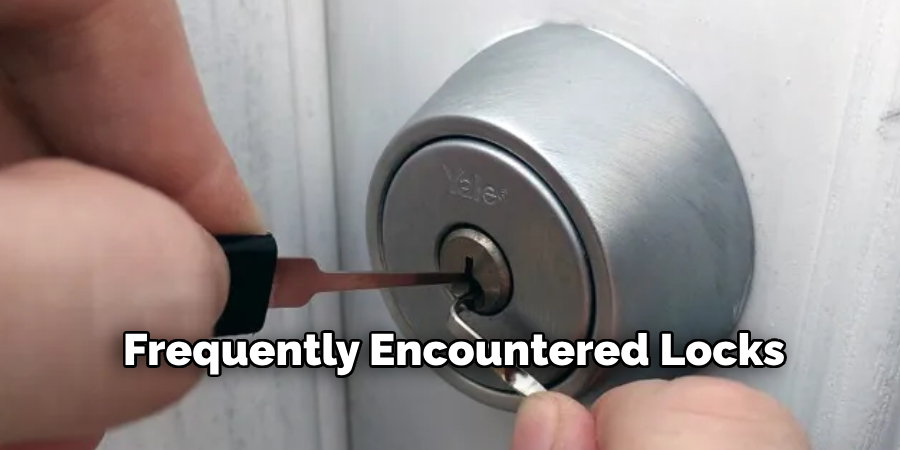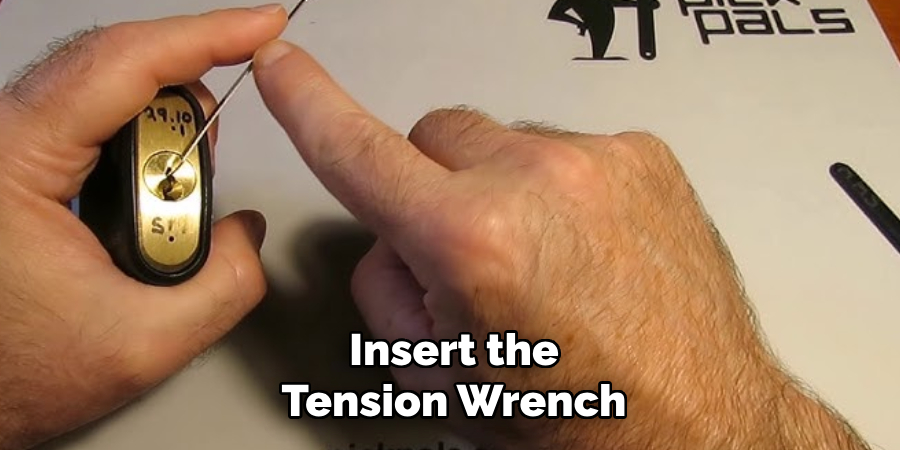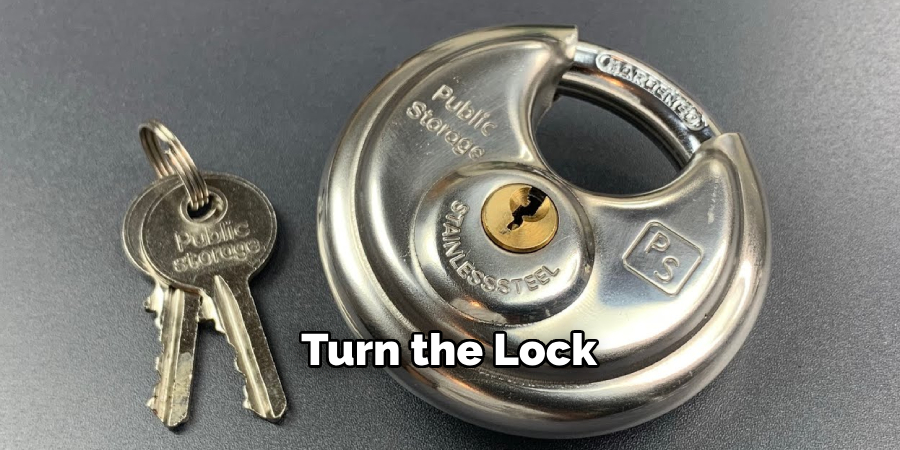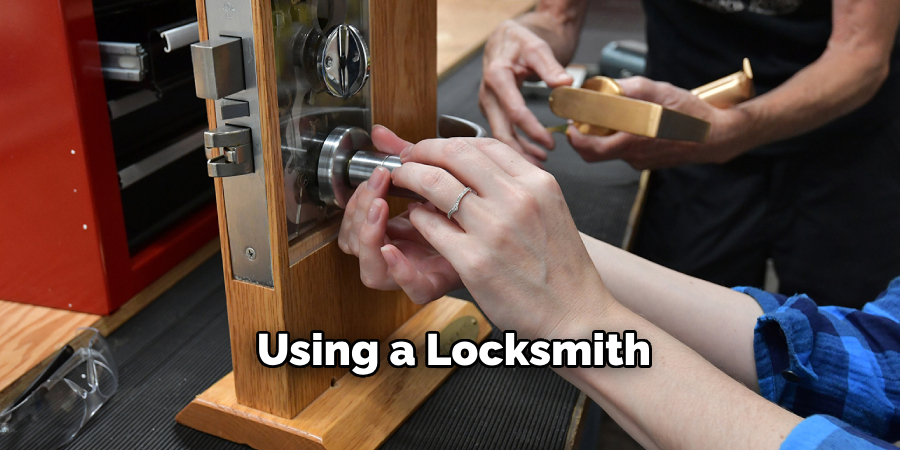Knowing how to pick a storage lock can be useful in specific situations, such as when you’ve lost the key or forgotten the combination to your personal storage unit. Typically, storage locks are padlocks or combination locks, and understanding how they work can help you regain access without causing damage. However, it is crucial to make ethical considerations before attempting lock picking.

This skill should only be applied on your own property or with explicit permission from the lock’s owner. Unauthorized lock-picking is illegal and can lead to severe consequences. This article aims to provide a safe and practical guide for learning how to pick a storage lock. You will understand the tools required, the proper techniques, and the legal advice necessary to approach this process responsibly through the information provided. Always use this knowledge ethically and within the bounds of the law.
Understanding Different Types of Storage Locks
Regarding storage units, various types of locks are commonly used to secure belongings. Understanding these locks is essential before attempting to work with them.
Padlocks
Padlocks are one of the most frequently encountered locks on storage units. These portable locks can be either keyed or combination-based, making them versatile and easy to use. Popular brands like Master Lock or ABUS use mechanisms that range from simple pin tumbler designs to more advanced locking systems. Keyed padlocks can often be picked using single-pin or raking techniques, while combination padlocks require alternative approaches involving decoding or manipulation.

Combination Locks
Combination locks operate through a dial or rotating mechanism that aligns internal components to release the shackle. These locks rely on a sequence of numbers, which must be correctly entered to unlock. They can be particularly challenging to pick, considering their design. Still, skilled individuals may use techniques such as listening for subtle differences in tension or using a tool to bypass the mechanism.
Disc Locks and Other Specialized Locks
Disc locks are highly secure and are designed explicitly for storage units. They feature a hardened steel body and a restricted shackle opening, making them resistant to cutting and prying. Picking these locks is more complex due to their disk-detainer mechanism, which requires specialized tools and experience. Other advanced locks, such as cylinder or electronic locks, may also be encountered, each presenting unique challenges. Familiarity with these varieties is vital for practical handling.
Legal Considerations Before Picking a Lock
Ethics and Law
Lock picking is a skill that demands both ethical responsibility and adherence to legal boundaries. It is imperative to pick locks you own or have explicit, documented permission to unlock.

Attempting to pick a lock without authorization is considered illegal in many jurisdictions and can result in severe consequences, including criminal charges, fines, or imprisonment. Beyond the legal ramifications, unauthorized lock picking raises serious ethical concerns, as it breaches privacy and trust. Always ensure you are fully aware of the laws regarding lock-picking in your region and carry proper permissions when exercising this skill.
When to Call a Locksmith
Sometimes, calling a professional locksmith is the better—and often safer—choice. If you are uncertain about the legality of your actions or the potential consequences of an unsuccessful attempt, it’s advisable to consult an expert. Additionally, certain advanced or high-security locks may require specialized tools and experience beyond the reach of a casual lock picker. A locksmith can provide efficient and legal solutions, ensuring the lock’s integrity while offering peace of mind. Prioritizing professional help in complex situations underscores a responsible approach to handling lock-related challenges.
Essential Tools for Picking a Storage Lock
When it comes to picking a storage lock, having the right tools is essential for success. Below is a breakdown of the primary tools used and alternative options to consider, as well as guidance on where to acquire these items.
Lock Picking Tools
- Tension Wrench: This tool applies rotational force to the lock, creating the necessary pressure to manipulate the pins.
- Pick Tools: These come in a variety of styles, including hook picks, rake picks, and diamond picks, which are specifically designed to lift and adjust the pins inside a lock.
- Picks for Combination Locks: For storage locks with a combination mechanism, specialized tools can assist in decoding or manipulating the combination for access.
Alternative Tools
- Bobby Pins or Hairpins: These makeshift lock picks can be useful in emergency situations when standard tools are unavailable.
- Lubricants: Products like graphite powder or silicone-based sprays help ensure the lock mechanism operates smoothly, reducing friction as you pick.
Where to Buy Tools
Lock-picking tools are available online or at specialty stores catering to locksmiths. However, it’s crucial to understand the laws in your jurisdiction before purchasing these tools, as their legality varies by location. Some countries and states permit possession only for licensed professionals, while others outright ban such tools. Always ensure compliance with local regulations when acquiring and using these items.
By equipping yourself with these tools and knowledge, you can better understand the mechanics behind lock-picking, whether as a professional locksmith or for legal, situational purposes.
How to Pick a Storage Lock: Picking a Padlock
Step 1: Insert the Tension Wrench

Position the tension wrench into the bottom of the keyhole and apply slight rotational pressure in the direction you would turn the key. This tool mimics the turning motion of a key and is essential in maintaining tension during the process.
Step 2: Use a Pick to Manipulate the Pins
Insert a pick tool into the keyhole and gently feel for the pins inside the lock. Most padlocks have several pins that need to be aligned to the correct position. Push each pin upward individually while maintaining light pressure on the tension wrench. This step requires patience and steady hands.
Step 3: Listen for Feedback
Pay attention to the subtle clicks or changes in resistance when pressing the pins. These tactile and auditory feedback signals indicate that a pin has been set into its correct position. Fine-tune your pressure and movements to ensure precision during this step.
Step 4: Turn the Lock
Once all the pins are set properly, the lock should turn. Gradually increase the pressure on the tension wrench in the same rotational direction as before until the shackle releases. If the padlock doesn’t turn, reassess the pin positions and adjust as needed.

Mastering these steps takes practice and a careful hand. Always ensure you have legal authorization before attempting to pick any lock. Use these techniques responsibly and ethically.
How to Pick a Storage Lock: Step-by-Step Guide
Step 1: Inspect the Lock and Dial
Examine the combination lock closely for any clues that might indicate the correct numbers. Look for worn-out numbers, small scratches, or subtle marks on the dial, as these can sometimes indicate which digits are part of the combination. Visual inspection can save time and guide you in the process.
Step 2: Apply Tension to the Dial
Apply light tension to the lock by gently pulling on the shackle or applying pressure in the direction required to open the lock. This tension is necessary to feel resistance or feedback as you rotate the dial. Be cautious not to apply too much force, as it may obscure the subtle feedback you seek.
Step 3: Identify the Numbers
Slowly rotate the dial in the direction specified by the lock’s manufacturer. While turning, pay close attention to any resistance or clicking sounds that may indicate the position of a correct number. Pause at each number where you notice resistance and mentally note the sequence.
Step 4: Set the Combination
Once you have identified all the numbers in the combination, align them properly on the dial by turning it in the correct sequence. Double-check the alignment of the numbers, then pull on the shackle to open the lock. If it does not open, reassess the numbers and try again, as precision is key.
Remember, picking a combination lock requires patience and practice. Always ensure you are authorized before attempting this process, and use this knowledge ethically.
Troubleshooting and Tips
Sticking Pins or Difficulty in Turning
If you encounter sticking pins or find it difficult to turn the lock, consider lubricating the lock mechanism. Use graphite powder or silicone spray, as these lubricants effectively reduce friction without damaging the lock’s internal components. Avoid using oil-based lubricants, which can collect dirt and lead to further issues over time.
Lock Not Opening After Picking
When the lock fails to open even after you believe the pins are all set, it might be due to misaligned pins or insufficient tension. Reassess your technique by carefully repositioning the tension wrench and adjusting the pressure applied. Small, consistent changes in tension can make a significant difference in successfully opening the lock. Repeating the raking or single-pin picking process with attention to subtle feedback from the pins can also help.
Patience and Practice
Lock picking is a skill that requires both patience and practice to master. It’s normal to face challenges when learning new techniques or working with unfamiliar locks. Consistent practice on different types of locks can improve your precision and adaptability. Finally, always approach this practice ethically and only attempt to pick locks you’re authorized to open.
Alternative Methods for Opening a Lock
Using a Locksmith
Hiring a professional locksmith can be a faster and safer solution when all else fails. Locksmiths are trained experts with the tools and experience to handle various types of locks efficiently. Whether dealing with a jammed lock, a broken key, or a more complex locking mechanism, they can provide quick assistance while minimizing the risk of damage to your property. This option is particularly ideal if you’re pressed for time or unsure about attempting other methods yourself.

Other Non-Destructive Methods
Non-destructive techniques such as shimming or decoding may be viable alternatives for those familiar with basic lock mechanisms. Shimming involves inserting a thin piece of metal to bypass specific types of locks, while decoding is useful for opening combination locks by systematically identifying the correct code. However, it’s crucial to emphasize that these techniques must only be practiced ethically and with proper authorization, ensuring respect for property and privacy.
Conclusion
Understanding how to pick a storage lock or any other lock requires knowledge of lock types, the appropriate tools, and the application of correct techniques. This process demands patience and precision, but it is equally important always to prioritize legal and ethical considerations. Lockpicking should only be done with proper authorization and respect for property rights. For those uncertain or unsuccessful, consulting a professional locksmith is a wise choice to prevent damage or potential legal issues. Remember, responsibility and integrity are paramount when exploring this skill.

